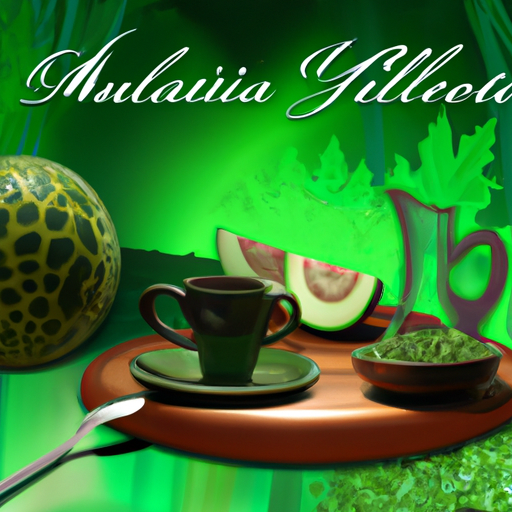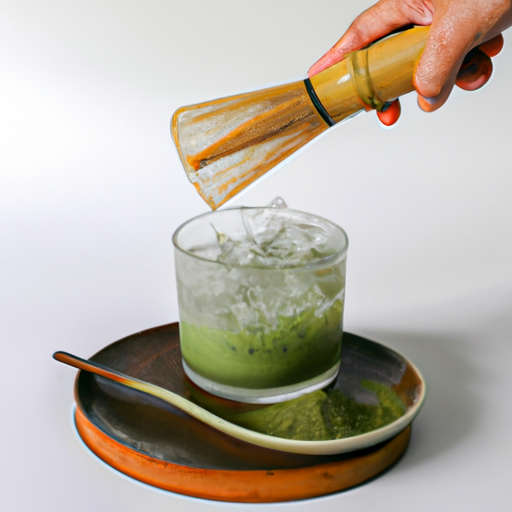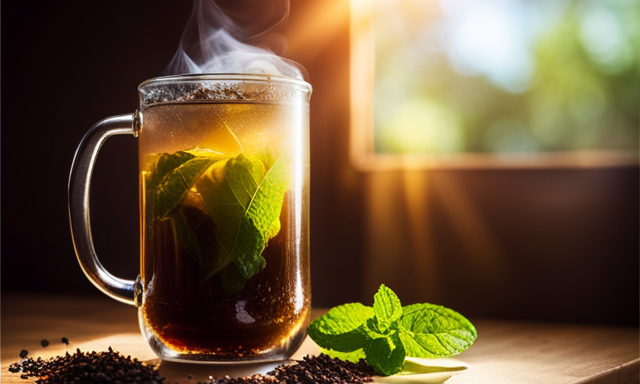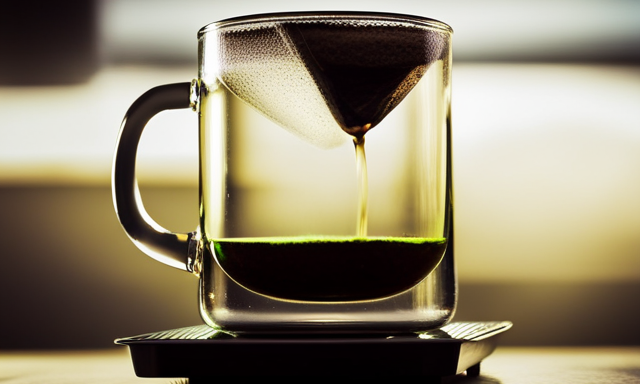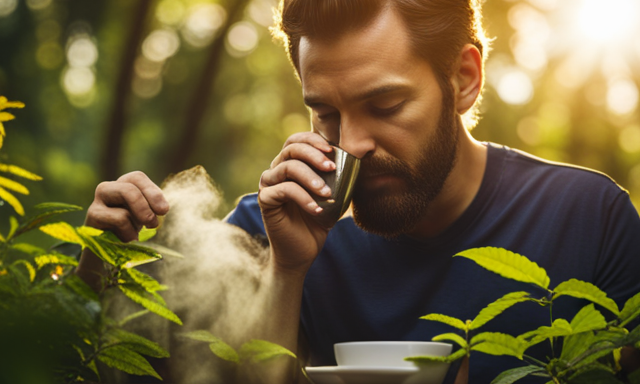As I sit back savoring my daily yerba mate, I find myself curious about the origins of this delightful beverage.
Yerba mate has become a staple in my life, providing me with energy and mental clarity that lasts throughout the day. But its origins are shrouded in mystery and intrigue, leading me down a rabbit hole of research to uncover its history and cultural significance.
Yerba mate is more than just a beverage; it’s a symbol of community, tradition, and shared experiences. Its roots can be traced back to the indigenous Guaranàpeople of South America who believed that the plant had medicinal properties and spiritual significance.
Today, yerba mate is widely consumed across South America and beyond, with each region having its own unique traditions and preparation methods.
Join me on this journey as we explore the fascinating world of yerba mate where it comes from, how it’s made, its nutritional benefits, cultural significance and much more!
Key Takeaways
- Yerba mate originates from the indigenous Guaranà people of South America who used it for its medicinal properties.
- Yerba mate cultivation involves planting, pruning, harvesting, and drying the long, slender leaves with serrated edges and a woody stem.
- Yerba mate has health benefits such as caffeine for energy without jitters, antioxidants to protect against chronic diseases, and being rich in vitamins and minerals.
- Yerba mate is an important part of South American culture and tradition, with different preparations and cultural significance in different regions.
History and Origin of Yerba Mate
Did you know that yerba mate has a rich history and interesting origin, starting with the indigenous Guaranà people of South America? Yerba mate was first discovered by the Guaranà people in Paraguay, who were known for their extensive knowledge of natural remedies. They believed that the leaves of the yerba mate plant had medicinal properties and used it to treat a variety of ailments.
The influence of yerba mate on indigenous societies can be seen throughout South America. It wasn’t only used for its medicinal properties, but also played an important cultural role in many communities. Sharing a gourd of yerba mate tea became a symbol of friendship and hospitality, while drinking it alone was seen as a way to promote mental clarity and focus.
Today, yerba mate is still an important part of South American culture and is enjoyed by millions around the world. As we move into discussing the characteristics of the yerba mate plant, it’s important to remember the cultural significance this drink holds for many communities.
Characteristics of the Yerba Mate Plant
You’ll notice that the yerba mate plant has long, slender leaves with serrated edges and a woody stem. The leaves are dark green and shiny, giving off an earthy aroma when crushed. The plant can grow up to 6 meters tall and thrives in subtropical regions of South America.
Cultivation of the yerba mate plant is a labor-intensive process that involves planting, pruning, harvesting, and drying. The plant is typically grown in shaded areas to protect it from direct sunlight and maintain its delicate flavor profile. After harvesting, the leaves are dried over a wood fire which gives them a smoky taste.
The yerba mate plant is known for its numerous health benefits. It contains caffeine which provides an energy boost without the jitters associated with coffee. It also contains antioxidants which help protect against chronic diseases such as cancer and heart disease. In addition to these health benefits, yerba mate is also rich in vitamins and minerals such as vitamin C, potassium, and magnesium. Its nutritional value makes it a popular beverage choice among health-conscious individuals.
Moving on to nutritional value and health benefits…
Nutritional Value and Health Benefits
If you’re looking for a natural way to boost your energy and protect against chronic diseases, yerba mate may be just what you need. I started drinking yerba mate every morning instead of coffee and noticed an increase in my focus and productivity throughout the day.
Yerba mate contains caffeine but also other stimulants like theobromine and theophylline that provide a more balanced energy boost without the jitters or crash often associated with coffee.
In addition to its energizing effects, yerba mate is also known for its weight loss properties. Studies have shown that yerba mate can help reduce appetite and increase metabolism, making it easier to maintain a healthy weight. It’s also rich in antioxidants, which can help protect against oxidative stress and inflammation that contribute to chronic conditions such as heart disease, diabetes, and cancer.
Compared to coffee, yerba mate offers a range of health benefits beyond just caffeine content. While both beverages can provide an energy boost, yerba mate has been shown to have anti-inflammatory properties as well as potential benefits for digestion and immune function.
So if you’re looking for a healthier alternative to your daily cup of joe or seeking support for weight management goals, give yerba mate a try!
As we delve into traditional preparation and drinking methods in the next section, it’s important to note that there are many cultural traditions surrounding this beloved beverage. From sharing gourds among friends or family members to adding herbs or sweeteners based on personal preference, there are countless ways to enjoy yerba mate while honoring its rich history and cultural significance.
Traditional Preparation and Drinking Methods
When preparing yerba mate in the traditional way, a gourd is filled with loose leaves and hot water is poured over them before being sipped through a filtered straw known as a bombilla. This method of preparation has been used for centuries by the indigenous people of South America and is still widely practiced today. It’s not just about drinking the tea, but also about sharing it with friends and family.
Traditional gourd sharing is an integral part of the yerba mate culture. The gourd is often passed around in a clockwise direction, allowing each person to take turns sipping from the same straw. Sharing yerba mate is seen as a sign of friendship, unity, and respect among friends or family members. It’s common to see groups gathered together enjoying their mate while engaging in conversation or simply relaxing.
While traditional methods are still popular, modern brewing techniques have emerged in recent years that make it easier to prepare and consume yerba mate. There are now electric kettles designed specifically for brewing yerba mate, as well as specialized cups that come with built-in filters and straws. These innovations allow people to enjoy their favorite drink without having to go through the hassle of preparing it traditionally.
Whether you prefer traditional gourd sharing or modern brewing techniques, there are many ways to enjoy yerba mate. However you choose to prepare your tea, one thing remains constant: yerba mate continues to be an important part of South American culture and tradition even today.
Moving on from prep methods into regional variations; Mate preparations vary greatly depending on where you are in South America…
Regional Variations and Differences
I find it fascinating how different regions prepare and drink yerba mate.
In Argentina, they use a gourd called a mate, while in Brazil they use a cuia for their chimarrão.
Paraguayans enjoy tereré, which is prepared with cold water and herbs like mint or lemongrass.
Learning about these regional variations adds to the richness of the yerba mate culture and highlights the diversity within South America.
Argentinean yerba mate
Argentinean yerba mate is a beloved beverage that has been enjoyed for centuries by many South Americans. This infusion is made from the leaves of the yerba mate plant and is an integral part of Argentinean culture and social life.
It is common to see people carrying their thermoses filled with hot water and their gourds filled with yerba mate throughout the day. The cultural significance of Argentinean yerba mate goes beyond just being a simple drink.
It is a symbol of friendship, hospitality, and community. Sharing a gourd of yerba mate is a way to connect with others, to take time to slow down and enjoy each other’s company.
In Argentina, drinking yerba mate can be seen as an expression of identity and pride in one’s heritage. Moving on to Brazilian chimarrão…
Brazilian chimarrão
If you’re looking for a new cultural experience, have you tried Brazilian chimarrão? This traditional drink is similar to Argentinean yerba mate but with its own unique flavor and ritual.
Like Argentinean yerba mate, chimarrão is made from the leaves of the yerba mate plant. However, Brazilian chimarrão is traditionally consumed through a metal or wooden straw called a bomba and in a special gourd called the cuia. The cuia and bomba are considered important traditional accessories that add to the cultural significance of chimarrão in Brazil.
In addition to being a popular social drink, chimarrão holds great cultural significance in Brazil as it represents hospitality and friendship. It’s common for people to share their gourds with friends and family during social gatherings while enjoying conversation and bonding over this beloved drink.
Now that we’ve explored Brazilian chimarrão let’s take a look at another variant of yerba mate – Paraguayan tereré.
Paraguayan tereré
Paraguayan tereré is a refreshing and unique way to enjoy yerba mate, traditionally served cold and with flavorings like lime or mint. It has a cultural significance in Paraguay as it is often shared among friends and family during social gatherings.
Here are some interesting facts about this beloved drink:
- Tereré is believed to have originated from the Guaranà indigenous people who used to consume mate in its traditional hot form before Spanish colonization.
- The preparation of tereré involves using cold water instead of hot water, which gives it a different taste compared to other forms of yerba mate.
- Drinking tereré is often accompanied by sharing a bombilla, or metal straw, which adds an element of communal drinking and social bonding.
- In Paraguayan culture, tereré represents friendship, hospitality, and unity among people.
Tereré’s popularity has spread beyond Paraguay’s borders, with neighboring countries like Argentina and Brazil also adopting their own versions of the drink. Yerba mate’s cultural significance goes beyond just being a beverage; it plays an important role in bringing people together for moments of social bonding.
Yerba Mate and Social Bonding
You’ll feel an instant connection with those you share yerba mate with, as it promotes social bonding through a communal drinking experience. In South America, where yerba mate is most commonly consumed, it’s common to see people sharing a gourd and bombilla (metal straw) of yerba mate in public spaces like parks or plazas. This practice creates a sense of camaraderie and community among those who partake.
Yerba mate has long been associated with social bonding benefits and cultural significance in countries like Argentina, Paraguay, Uruguay, and Brazil. It’s often consumed during social gatherings or ceremonies, such as welcoming guests into one’s home or celebrating special occasions. The act of sharing yerba mate also serves as a symbol of hospitality and friendship.
The communal aspect of drinking yerba mate has even inspired the creation of specialized vessels for sharing the beverage. For example, the traditional Argentinean "mate"is typically made from a hollowed-out gourd and decorated with intricate designs. These unique vessels add another layer to the cultural significance of sharing yerba mate and further strengthen the bond between drinkers.
As a result of its widespread popularity in South America, yerba mate has become deeply ingrained in popular culture throughout the region. From music festivals to street fairs, it’s not uncommon to find vendors selling freshly brewed yerba mate alongside other snacks and drinks. The beverage also appears frequently in literature and art from these countries. Its continued presence in daily life is a testament to both its cultural significance and its ability to bring people together over shared experiences.
Yerba Mate in Popular Culture
I find it fascinating to explore how yerba mate has made its way into popular culture.
From literature and music to advertising and marketing, this South American drink has become a cultural icon.
Yerba mate can be seen in the art and design of packaging, logos, and branding for various companies that produce or sell the beverage.
It’s exciting to see how yerba mate has influenced different aspects of pop culture around the world.
Literature and music
With its rich history in literature and music, yerba mate has become a cultural icon in many South American countries. From the poetry of Pablo Neruda to the songs of Mercedes Sosa, yerba mate has had a significant cultural influence on artists throughout the region.
In these artistic representations, yerba mate is often portrayed as a symbol of friendship, hospitality, and social connection. In literature, yerba mate plays an important role in many works of fiction and non-fiction alike.
In Jorge Luis Borges’ classic short story ‘The Aleph,’ for example, the protagonist experiences a moment of transcendence while sipping on a cup of yerba mate. Similarly, in Eduardo Galeano’s seminal work ‘The Open Veins of Latin America,’ yerba mate is used as a metaphor for the exploitation and inequality that have plagued the region for centuries.
Through these artistic expressions, yerba mate continues to hold a special place in South American culture today. As we explore how advertising and marketing have contributed to the global popularity of this beloved beverage, it’s important to recognize its deep roots within South American society and culture.
Advertising and marketing
Get ready to discover how marketers have successfully spread the love for yerba mate worldwide through creative advertising campaigns and strategic partnerships. Yerba mate has gained popularity in recent years due to its numerous health benefits, such as improving mental clarity, boosting energy levels, and aiding digestion. As a result, companies have been quick to capitalize on this trend by promoting their own brands of yerba mate through various marketing strategies.
One successful example is Guayaki’s "Market Driven Regeneration"campaign that emphasizes the company’s commitment to sustainable farming practices and supporting indigenous communities in South America where yerba mate is grown. This ethical approach resonates with consumers who prioritize environmental responsibility and social justice. In turn, this type of messaging has helped boost sales for Guayaki and other similar brands. However, there are also concerns about cultural appropriation and exploitation of indigenous cultures when it comes to marketing yerba mate as a trendy superfood. These ethical implications should not be ignored when considering consumer behavior towards this drink.
Moving on from consumer behavior towards yerba mate, let’s explore how art and design have played a role in shaping its image in popular culture.
Art and design
Through the use of vibrant colors and intricate illustrations, yerba mate has been transformed into a cultural icon that represents the natural beauty and rich history of South America. This beverage isn’t only enjoyed for its taste but also for its artistic impressions on traditional gourds and bombillas. The designs on these items often depict scenes from nature, indigenous symbols, or even historical events.
Here are five ways to appreciate the cultural significance of yerba mate through art and design:
- Visit a museum exhibit showcasing traditional gourd artwork
- Attend a workshop to learn how to create your own personalized gourd design
- Research the history behind certain symbols commonly used in yerba mate art
- Purchase a unique bombilla with an elaborate design as a souvenir
- Enjoy yerba mate while admiring the intricate details of your gourd or bombilla
Nowadays, it’s important to consider sustainability and environmental impact when producing yerba mate.
Sustainability and Environmental Impact
You can make a positive impact on the environment by choosing sustainably sourced yerba mate. Sustainable farming practices not only help to preserve the natural resources of the land, but also provide better working conditions for farmers and their communities.
When buying yerba mate, look for certifications such as Fair Trade or Rainforest Alliance which ensure that environmental conservation is a priority. Sustainability goes beyond just the farming practices. It also includes packaging and transportation of yerba mate products.
Choosing companies that use eco-friendly packaging materials and carbon-neutral shipping methods can greatly reduce the environmental impact of your yerba mate consumption. As consumers, we have the power to drive demand for sustainable products and influence companies to prioritize environmental conservation.
By making conscious choices when purchasing yerba mate, we can contribute to a healthier planet for generations to come. And with increasing awareness about sustainability in agriculture, we can expect more efforts towards promoting environmentally responsible production practices in the 21st century.
Yerba Mate in the 21st Century
In the 21st century, yerba mate has taken the world by storm, becoming a ubiquitous beverage choice for health enthusiasts and caffeine addicts alike.
Global consumption of yerba mate has increased significantly, with countries like the United States, Canada, and Europe importing large quantities of this traditional South American drink. This growing interest in yerba mate is not only due to its unique taste but also because of its numerous health benefits.
As more people become aware of the importance of healthy living, yerba mate’s popularity continues to soar. It’s no surprise that future trends show an increase in demand for this herbal tea. People now prefer natural alternatives over synthetic energy drinks and coffee. With its high caffeine content and rich nutrient profile, yerba mate is an excellent substitute for these unhealthy beverages.
Moreover, as consumers become increasingly conscious about their ecological footprint on the planet, they are looking towards sustainable options when it comes to food and beverage choices. Yerba mate production is known for its eco-friendly practices that help preserve biodiversity and protect natural resources.
As a result, more companies are investing in organic farming methods to ensure a sustainable supply chain while meeting consumer demands for ethical products.
In conclusion, with yerba mate’s global consumption on the rise and future trends pointing towards continued growth, it’s clear that this beloved herbal tea will continue to be a staple in our diets for years to come.
Frequently Asked Questions
How does Yerba Mate compare to other caffeinated beverages in terms of caffeine content?
When it comes to caffeine content, yerba mate falls somewhere between coffee and energy drinks. While coffee has the highest caffeine content per serving, yerba mate contains less caffeine but more other stimulants such as theobromine and theophylline which provide a smoother and longer-lasting stimulation than coffee.
On the other hand, energy drinks have much higher caffeine content than both yerba mate and coffee, but often contain high amounts of sugar or artificial sweeteners.
In terms of cultural significance, yerba mate is deeply rooted in South American culture and its consumption is often seen as a social activity that brings people together.
Overall, while yerba mate may not be the strongest caffeinated beverage out there, its unique flavor profile and cultural significance make it a popular choice for many people looking for an alternative to traditional coffee or energy drinks.
Can Yerba Mate be consumed by people with caffeine sensitivities or allergies?
If you’re someone who struggles with caffeine sensitivity, finding a suitable alternative can be frustrating. Thankfully, yerba mate is an excellent choice for those looking to steer clear of traditional caffeine sources. Not only does it contain less caffeine than coffee, but it also has additional benefits beyond its energy-boosting properties.
Yerba mate is rich in antioxidants and nutrients that support digestion, weight loss, and mental clarity. Plus, it’s a culturally significant beverage in South America where it’s been consumed for centuries as a social drink among friends and family.
So, if you’re looking to switch things up and try something new without sacrificing taste or benefits, yerba mate might just be your new go-to drink!
Are there any potential negative health effects associated with drinking Yerba Mate regularly?
As someone who regularly drinks yerba mate, I can attest to its numerous health benefits. However, there are also potential risks associated with consuming this drink on a regular basis.
Long term effects of drinking yerba mate include an increased risk of esophageal cancer and other digestive problems. These risks are often attributed to the high levels of polycyclic aromatic hydrocarbons found in some brands of yerba mate.
While these risks are not significant for most people, it’s important to be aware of them and limit your intake accordingly. Additionally, those with caffeine sensitivities or allergies should avoid drinking yerba mate altogether.
Overall, while yerba mate can provide many health benefits when consumed in moderation, it’s essential to understand its potential negative effects before making it a regular part of your diet.
What is the cultural significance of Yerba Mate in Argentina and other South American countries?
Yerba mate is more than just a drink in South America. It represents cultural customs and social etiquette that have been passed down for generations.
In Argentina, it’s common to share yerba mate with friends and family, passing the gourd around while engaging in conversation. The act of sharing yerba mate symbolizes friendship, trust, and community. It’s not just about the drink itself but also about the experience of sitting together and enjoying each other’s company.
Similar customs can be found throughout other South American countries where yerba mate is consumed regularly. Understanding the cultural significance of yerba mate is important when experiencing it for yourself because it allows you to fully appreciate the ritual that surrounds it.
How does the production and distribution of Yerba Mate impact local economies and communities?
As someone who’s lived in a community where yerba mate is produced and distributed, I can attest to the significant local impact it has. The sustainable practices used in its production not only benefit the environment but also support the livelihoods of many families.
The sale and export of yerba mate provide income for farmers, processors, and distributors alike. Additionally, the cultural significance of yerba mate adds value to its production and consumption, making it an integral part of our community’s identity.
Overall, the production and distribution of yerba mate play a vital role in supporting local economies and preserving cultural traditions while promoting sustainability practices.
Conclusion
In conclusion, learning about the history and origin of yerba mate has been a fascinating journey for me. It’s amazing to think that this plant has been used for centuries by indigenous communities in South America and has now become a popular beverage worldwide.
The characteristics of the yerba mate plant, its nutritional value, and health benefits make it an excellent choice for those looking for a natural energy boost. I also appreciate the cultural significance of yerba mate and how it brings people together. Whether it’s sharing a gourd with friends or participating in traditional ceremonies, yerba mate is more than just a drink – it’s a symbol of social bonding.
As we move forward into the 21st century, I hope that we can continue to enjoy yerba mate while also being mindful of its environmental impact and promoting sustainable practices.
Overall, exploring the world of yerba mate has given me a newfound appreciation for this unique beverage and its rich cultural heritage. From its origins in South America to its popularity around the globe, yerba mate truly is a remarkable plant with many benefits to offer.

